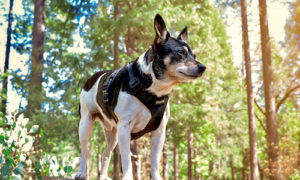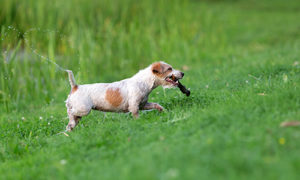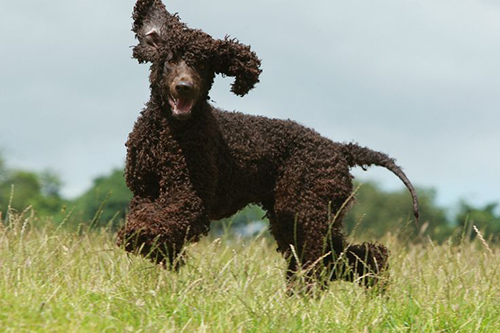
Irish Water Spaniels are amongst the oldest and most unique of the spaniels. Dogs similar to them are described in documents from one thousand years ago. Canines known as Shannon Spaniels, Whip-Tail Spaniels, Rat-Tail Spaniels, or Irish Water Spaniels were mentioned in the 1100s. Continual references of these dogs can be found from 1600 on. It is assumed that the King of France was presented with an Irish Water Spaniel. Even if the breed was at one time found in several varieties or if various similar breeds were its ancestors is a matter of speculation.
However, what most breed historians agree upon is that many similar spaniels were in Ireland at the time, such as:
- Southern Irish Spaniel
- Northern Irish Spaniel
- Tweed Spaniels
The Southern Irish Spaniel or McCarthy’s breed is believed to be the main forefather of the dogs we know today. In the mid-1800s, the look of the productive sire Boatswain so inspired the breed that he is often acknowledged as the originator of the modern Irish Water Spaniel. In the late 1800s, the breed entered the show ring in America and Britain.
By 1875, the breed ranked third most popular among sporting dogs. However, it lost popularity despite its stunning clownish appearance and professional water-retrieving skills and is now mainly found as a family pet or seen in the show ring.
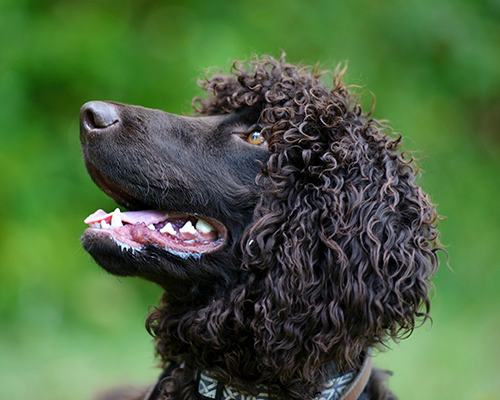
Breed Standard
The Irish Water Spaniel is an athletic, curious, and active breed that requires lots of physical and mental exercises to keep from becoming bored or frustrated. One hour of strenuous playing or free-running daily is necessary to satisfy its needs. An excellent way to challenge the dog mentally, which it enjoys, is obedience training.
Breed Facts
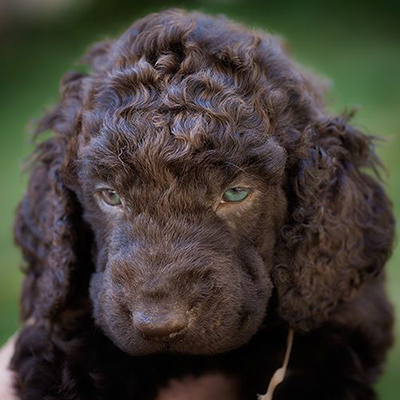
- Activity level: Average. The IWS is a dual-purpose hunting dog bred for upland game and waterfowl. It has excellent endurance and tolerance for cold weather. The breed is also a powerful swimmer, and its versatility makes it perfect for various dog sports.
- Grooming: Requires a brushing every two weeks and a trimming every two months.
- Coat: The body coat of crisp, dense curls is a mixture of a short undercoat and a longer, water-resistant outer coat. A characteristic topknot of curls sits on the dog’s head. The coat is smooth and short on the face, and the ears are covered with long, loose curls.
- Group: Sporting
- Year recognized by the AKC: 1884
- Popularity: Rare
- Family group: Gundog, spaniel
- Area developed: Ireland
- Date developed: 1800s
- Original purpose: Water retrieving
- Today’s purpose: Water retrieving, retrieving field trials
- Other names: None
Irish Water Spaniel Temperament
This dog attacks everything in life with enthusiasm and gusto. It loves to play, swim, run, hunt and needs plenty of exercises. This spaniel is an absolute clown at heart but can be independent and stubborn; therefore, it needs to be trained with a sense of humor, firmness, and patience. It is usually reserved with strangers. The dog is typically good with children, although some can be timid.
The Irish Water Spaniel is a companion hunting dog, and there is no difference between show and field lines. The breed possesses a solid working drive and an instinctive desire to please its owner, making it a highly trainable dog. The IWS are excellent watchdogs.
Health
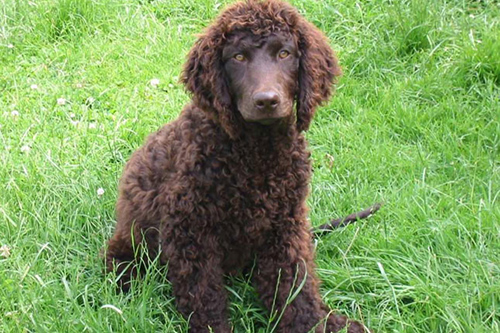
- Main concerns: CHD, otitis externa
- Minor concerns: Distichiasis
- Rarely seen: Megaesophagus, hypothyroidism, elbow dysplasia, seizures, nail-bed disease
- Recommended tests: hip, elbow, eye, thyroid
- Life span: 10 to 12 years
- Weight: Male – 55 to 65 pounds; Female – 45 to 58 pounds
- Height: Male – 22 to 24 inches; Female – 21 to 23 inches
Breeder and Buyer Advice
Finding an Irish Water Spaniel puppy might take some effort because of its rarity.
- Parent club: Irish Water Spaniel Club of America (www.iwsca.org); founded in 1937
- Rescue: The IWSCA provides rescue information on the club’s website.


